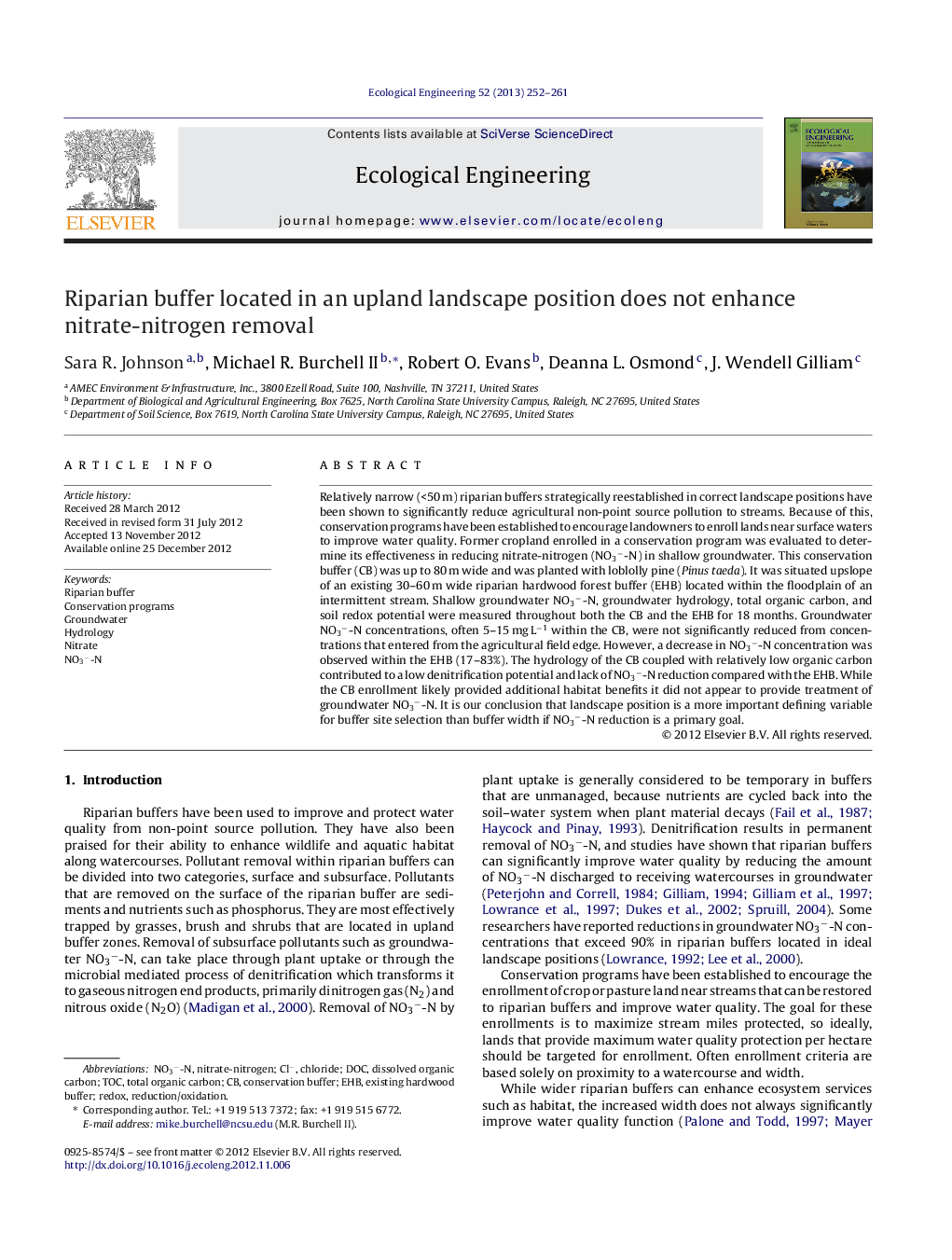| Article ID | Journal | Published Year | Pages | File Type |
|---|---|---|---|---|
| 4389761 | Ecological Engineering | 2013 | 10 Pages |
Relatively narrow (<50 m) riparian buffers strategically reestablished in correct landscape positions have been shown to significantly reduce agricultural non-point source pollution to streams. Because of this, conservation programs have been established to encourage landowners to enroll lands near surface waters to improve water quality. Former cropland enrolled in a conservation program was evaluated to determine its effectiveness in reducing nitrate-nitrogen (NO3−-N) in shallow groundwater. This conservation buffer (CB) was up to 80 m wide and was planted with loblolly pine (Pinus taeda). It was situated upslope of an existing 30–60 m wide riparian hardwood forest buffer (EHB) located within the floodplain of an intermittent stream. Shallow groundwater NO3−-N, groundwater hydrology, total organic carbon, and soil redox potential were measured throughout both the CB and the EHB for 18 months. Groundwater NO3−-N concentrations, often 5–15 mg L−1 within the CB, were not significantly reduced from concentrations that entered from the agricultural field edge. However, a decrease in NO3−-N concentration was observed within the EHB (17–83%). The hydrology of the CB coupled with relatively low organic carbon contributed to a low denitrification potential and lack of NO3−-N reduction compared with the EHB. While the CB enrollment likely provided additional habitat benefits it did not appear to provide treatment of groundwater NO3−-N. It is our conclusion that landscape position is a more important defining variable for buffer site selection than buffer width if NO3−-N reduction is a primary goal.
► The study emphasizes additional buffer width does not necessarily produce proportional groundwater water quality benefits. ► The conservation buffer was added in an upland landscape position and did not contribute to groundwater NO3−-N reduction. ► A reduction in NO3−-N was only observed through the existing hardwood forested buffer located downslope. ► Landscape position determined the effectiveness of this buffer and should be a primary metric for site selection.
